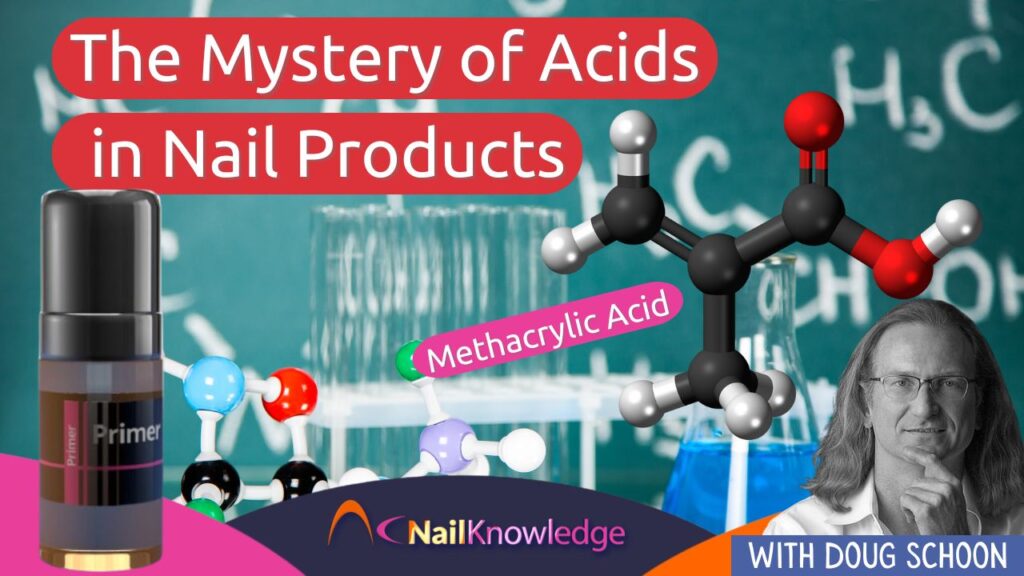When it comes to nail care, understanding the role of acids in various nail products is crucial for achieving healthy and beautiful nails. In this guide, we’ll explore the world of acids in nail products, debunk common myths, and provide essential safety tips for users.
Giải mã vai trò của axit trong các sản phẩm làm móng: Phân biệt sự thật và hư cấu
There’s a lot of confusion about pH and its effect on the nail plate. Acids are often misunderstood.
Acids play a significant role in nail products, but their presence often raises concerns among consumers. Let’s start by breaking down the basics of acids and their function in nail care.
Các loại axit trong sản phẩm làm móng: hữu cơ so với vô cơ
Acids can be categorized into two main types: organic and inorganic. Organic acids, containing carbon, not “certified organic”, are commonly found in nail products and are generally safer for use. On the other hand, inorganic acids, while less common in nail care, require more cautious handling due to their potentially corrosive nature.
For example, vinegar is a harmless weak organic acid, while sulfuric acid is a dangerous strong inorganic acid. Just because something is acid doesn’t mean it is harmful, so don’t let the word scare you. Note: Strong inorganic acids are not used in nail products.
Phá vỡ huyền thoại: Xóa tan những quan niệm sai lầm phổ biến
Some acids and bases (alkaline) are corrosive to human skin and eyes, posing a risk to soft tissues. Bearing this in mind, let’s debunk a common myth about nail primers that contain acids, like methacrylic acid. Many believe that methacrylic acid eats holes in the nail plate to improve adhesion, but this is a misconception. Methacrylic acid is actually a weak organic acid that does not dissolve the nail plate. To demonstrate, I’ve soaked nail clippings in 100% methacrylic acid primers for months without any damage. Unlike strong inorganic acids, which can harm the nail plate, methacrylic acid is safe for such uses in the professional nail industry. This highlights the significant differences among types of acids, showing they are not the same.
An toàn là trên hết: Điều hướng sử dụng axit
While some acids are corrosive to skin and eyes, methacrylic acid is particularly potent. If using primers containing this acid, it’s crucial to avoid contact with skin and eyes. The nail plate, a highly cross-linked structure, resists damage from methacrylic acid. However, skin and eyes are vulnerable and can rapidly suffer damage upon contact. Should any contact with this type of primer occur on the skin, wash it off immediately with soap and water and keep rinsing for at least five minutes to prevent worsening corrosion. Eye contact is more severe; rinse the eye and seek medical attention right away.
Tầm quan trọng của thiết bị bảo vệ: Bảo vệ chống lại các mối nguy tiềm ẩn
Để đảm bảo an toàn, hãy luôn đeo găng tay và kính bảo vệ mắt khi sử dụng sơn lót axit methacrylic. Hãy nhớ rằng, ít hơn là nhiều hơn với sơn lót. Việc sử dụng quá nhiều có thể khiến sơn lót thấm vào thành bên, gây đau và có thể gây bỏng da. Hơn nữa, sử dụng quá nhiều sơn lót sẽ làm giảm hiệu quả của sơn lót. Để có kết quả tối ưu, chỉ nên thoa một lớp mỏng lên móng sạch và khô.
Tôi nghĩ điều thú vị cần lưu ý là độ pH của axit methacrylic nằm trong khoảng 1-2 và loại axit này không gây hại cho móng, do đó độ pH không phải là chỉ số tốt để đánh giá tình trạng hư tổn của móng khi nói đến các sản phẩm chăm sóc móng.
Ít hơn là nhiều hơn: Sử dụng axit một cách tiết kiệm
Applying nail products containing acids in moderation is key to preventing overexposure and potential skin irritation. By using these products sparingly and following recommended guidelines, users can achieve optimal results without compromising nail health.
Trao quyền cho người dùng bằng kiến thức
Demystifying acids in nail products is the first step towards empowering users to make informed choices about their nail care routine. By understanding the role of acids, debunking myths, and prioritizing safety, individuals can enjoy healthy and beautiful nails without fear or uncertainty.


